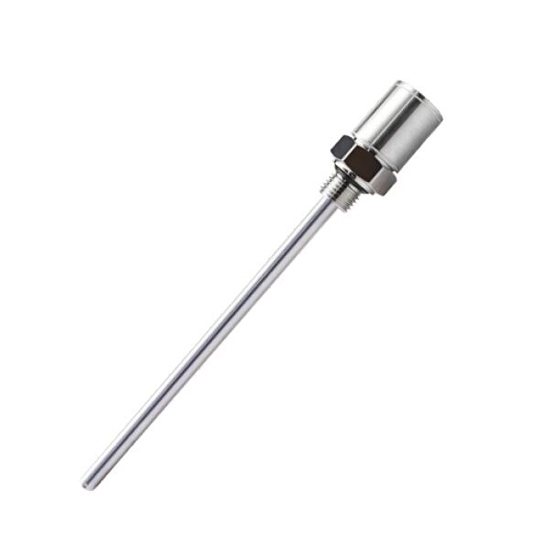
- Stock: In Stock
- Model: RDDLZ-LEVS-900
- Weight: 1.00
- SKU: RDDLZ-LEVS-900
Available Options
Capacitive water level sensor has an IP65 protection rating and can operate reliably in a wide temperature range of -40 to +85℃. When the water enters the container, the sensor shell outer and the sensing electrode output a standard current, voltage, or digital signal.
Specification
| Model | RDDLZ-BRW700-207 |
| Measuring Media | Water |
| Measuring Range (Optional) | 0-300mm, 0-400mm, 0-500mm, 0-600mm, 0-700mm, 0-800mm, 0-900mm |
| Blind Zone Range | There is a 10mm blind spot at the bottom of the probe |
| Accuracy | ±0.5%F.S., ±1.0%F.S. |
| Signal Output (Optional) | 4~20mA, 0~5VDC, RS485, RS232 |
| Signal Line | 2 Wire, 3 Wire, 4 Wire |
| Supply Voltage | 15~30VDC |
| Operating Temperature | -40~+85℃ |
| Storage Temperature | -40~+85℃ |
| Mechanical Vibration | ±20g |
| Shock (11ms) | 100g |
| Protection Class | IP65 |
| Material | 304 |
| Installation Method (Optional) | Threaded Installation (G1/2, M20*1.5 or Customized) |
| Electrical Connection (Optional) | Direct Outlet M12 Connector |
Note: If you need to customize other measuring ranges, please feel free to contact us.
Dimension (Unit: mm)
Tips: Is the capacitive water level sensor susceptible to interference?
Capacitive water level sensors can be susceptible to interference, although the extent varies depending on the design and environment. Common sources of interference include electromagnetic fields from nearby electrical equipment, stray capacitance from surrounding objects, and changes in temperature or humidity. These interferences can lead to inaccuracies in water level measurements or false readings. Shielding techniques, proper grounding, and signal filtering can help mitigate interference effects to some extent. Additionally, careful placement of the sensor away from sources of electromagnetic interference and calibration procedures can further improve its resistance to disturbances. Despite these measures, it's important to recognize that no sensor is completely immune to interference, and users should consider the specific environmental conditions and potential sources of interference when deploying capacitive water level sensors.
